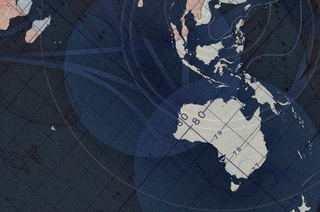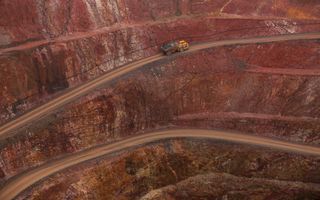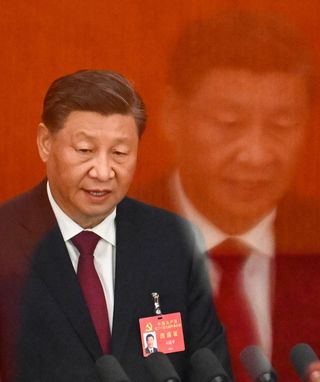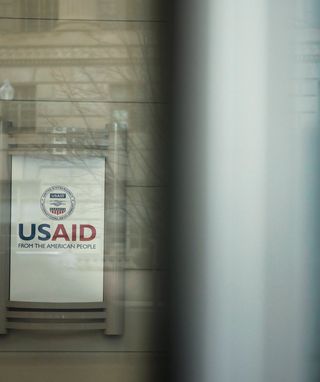The headlines
Access to critical minerals and especially rare earths has been a recurring theme of President Trump’s first few months in office. Whether in the form of an agreement with Ukraine, interest in acquiring Greenland, an executive order to increase mining or fast-tracked permitting, the administration is pursuing multiple avenues to rapidly reduce US dependence on China for critical minerals. However, the Trump administration’s overarching strategy to diversify US critical minerals supply chains — including leveraging allies and partners — is not yet clear.
What is happening behind the headlines?
President Trump clearly recognises the value of critical minerals to US national security, as highlighted by actions taken during his first and second terms. His push to secure critical minerals is being driven by China’s dominance across all segments of the supply chain for many minerals and the Chinese Communist Party’s (CCP) willingness to withhold supply.
In response to US export controls on AI and advanced semiconductor technology to China, the CCP has restricted gallium, germanium, graphite and antimony exports as well as technologies for rare earth extraction and separation. In early April 2025, after the United States levied tariffs on Chinese goods, China restricted seven additional rare earth exports and magnets to the United States. With critical minerals intrinsic to new energy sources, AI, computer chips and defence capability, US-China competition over this resource looks poised to deepen.
The United States has domestic resources and reserves of some, but by no means all, critical minerals and has been scaling up its investment in mining and processing. However, Benchmark Minerals research shows that, even if all announced projects come online, the United States will fall short of its demand. The United States lacks the in-ground resources, infrastructure, technical expertise and production scale to develop end-to-end supply chains. The United States will rely on global supply chains for many raw materials, metals and components for the foreseeable future, while building minimal manufacturing capacity for components such as high-performance permanent magnets.
Key debates around the issue
Where alternative critical mineral supply chains to China are concerned, there are three major debates: environmental trade-offs, paying higher market prices and addressing commercial sensitivities.
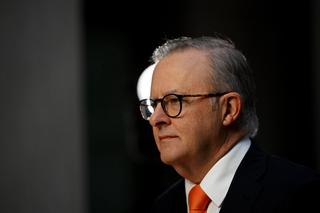
China has generally lower environmental standards than other developed countries in its mining and processing. This expedites the licensing process and reduces production costs. Should the United States and its partners seek to create separate supply chains, they would either have to compromise on their higher environmental standards to compete commercially with Chinese supply chains or absorb additional costs. President Trump’s March 2025 Executive Order on mineral production appears to address this by paving the way for expedited approvals for US mining projects and a reassessment of waste disposal and treatment. However, this move could prove at odds with many US allies’ standards and environmental goals, which could hamper cooperation.
A related issue is the often higher cost of minerals and metals produced outside China. Minerals mined and processed in countries with strong labour protections and higher costs of other inputs are more expensive. In addition, oversupply coming from China, Indonesia or Myanmar, for instance, can tank the market and force companies, like some Australian mines, out of business. Non-Chinese supply chains require buyers willing to pay higher prices for the same or very similar commodity. How these additional costs will be passed on — whether subsidised by governments, absorbed by global trading houses, borne by companies or passed on to end consumers — is an ongoing discussion among the United States and its allies and partners. In the absence of a critical mass of willing private sector buyers, governments need to underwrite minerals projects though soft loans, grants and offtake agreements.
The Australian Government’s April 2025 announcement seeking to create a Critical Minerals Strategic Reserve that includes modest government-backed offtake should provide some measure of private sector confidence to commercially green-light projects that receive support. It is not yet clear how the strategic reserve will interface with private sector producers and customers or similar initiatives, including stockpiles, of customer nations like Japan and the United States. The Australian government taskforce, led by the Department of Prime Minister and Cabinet, should shed more light on this in 2026.
Lastly, questions remain around how to address commercial sensitivities in sharing supply chain data to identify which critical minerals and rare earths to secure. Companies are reluctant to divulge details of mineral inputs to their products in case of commercial intelligence leakage, vulnerability of supply or their own lack of complete supply chain visibility. Differences in security clearances between the United States and Australia present additional obstacles to full visibility over each other's supply chains and cooperation.
The implications
Intense US attention to diversifying critical minerals supply chains is a good starting point for Australia because Canberra shares this goal and is integral to the solution. However, President Trump’s unpredictable approach has created uncertainty regarding US industrial policy, which dissuades financiers and industry. The administration’s emphasis on US domestic solutions and investment, deregulation, plus the generous grants and subsidies available, could also undercut Australia’s policy goals in this area. Capturing and channeling US attention towards Australia’s preferred supply chain solutions will require regular and ongoing effort by Canberra towards the White House and US departments.
At the White House level, Australia’s efforts to promote a critical minerals deal to President Trump are well targeted. Australia already has multiple critical minerals agreements with the United States, but a repackaged version could unlock additional investment, fast-track bilateral projects or encourage administration officials to prioritise Australia ahead of other mineral partners. While the US focus has been on Ukrainian minerals, Russia’s invasion means long-term instability and uncertainty. In contrast, substantial US foreign direct investment into Australian energy and minerals activities reflects existing US confidence, as do recent deals. In late 2024, both countries’ export finance agencies signed an agreement to streamline funding access for their critical minerals companies.
What to watch moving ahead
The first few months of the second Trump administration are in many respects unprecedented but there will be some consistent themes during his term, including on critical minerals.
The trajectory of successive US governments has been to secure critical minerals in a variety of ways — domestic production, bilateral agreements, minilaterals like the Quad and larger groupings like the US-led Minerals Security Partnership (MSP). The Trump administration supports the Quad, and this framework has already been working towards securing critical minerals through its Investor Network. While the Quad could provide one mechanism for critical mineral cooperation, the future of the MSP is less certain. A Biden-era construct, MSP member commitments to high environmental standards and sustainability will not appeal to the Trump administration. As a consensus-based group, President Trump and his administration is unlikely to gravitate towards the MSP.

Trends like US foreign direct investment into Australian mining, preliminary loan agreements between the US Export-Import Bank and mining projects in Australia, and strong official-level support may convince President Trump of the advantages of prioritising Australia and group-work on minerals. Ultimately, the United States wlll likely continue leveraging its alliance network to break China’s monopoly over critical minerals supply chains.
What should allies like Australia do about it?
As US policy on critical minerals continues to evolve, it suggests this issue regularly receives President Trump’s attention and his administration has been tasked with further developing this policy. This opens an aperture for Australia to shape US policy before it settles. Ideally, the Australian Government would secure US investment for both mining and processing in Australia and influence the United States to work collaboratively within a group of trusted country and industry partners to create new supply chains quickly.
Australia should be promoting the establishment of a small, critical minerals supply chain and buyer’s club. A group potentially comprising the AUKUS countries (Australia, the United Kingdom and the United States) plus countries with major mineral trading houses (Japan and South Korea), and Canada which have significant mineral riches, could come together to form this supply chain and buyer’s club. Among the members (and with third party assistance with processing) they could mine, process, buy and recycle a discrete set of key critical minerals.
Lastly, establishing a trusted group of companies to identify the right minerals and rare earths to protect and standardising security clearances with the United States to enable information sharing should be an Australian Government priority. As experts have argued, the 2011 US-Australia Reciprocal Security of Supply Arrangement provides a ready template.
Unpacking Trump 2.0

